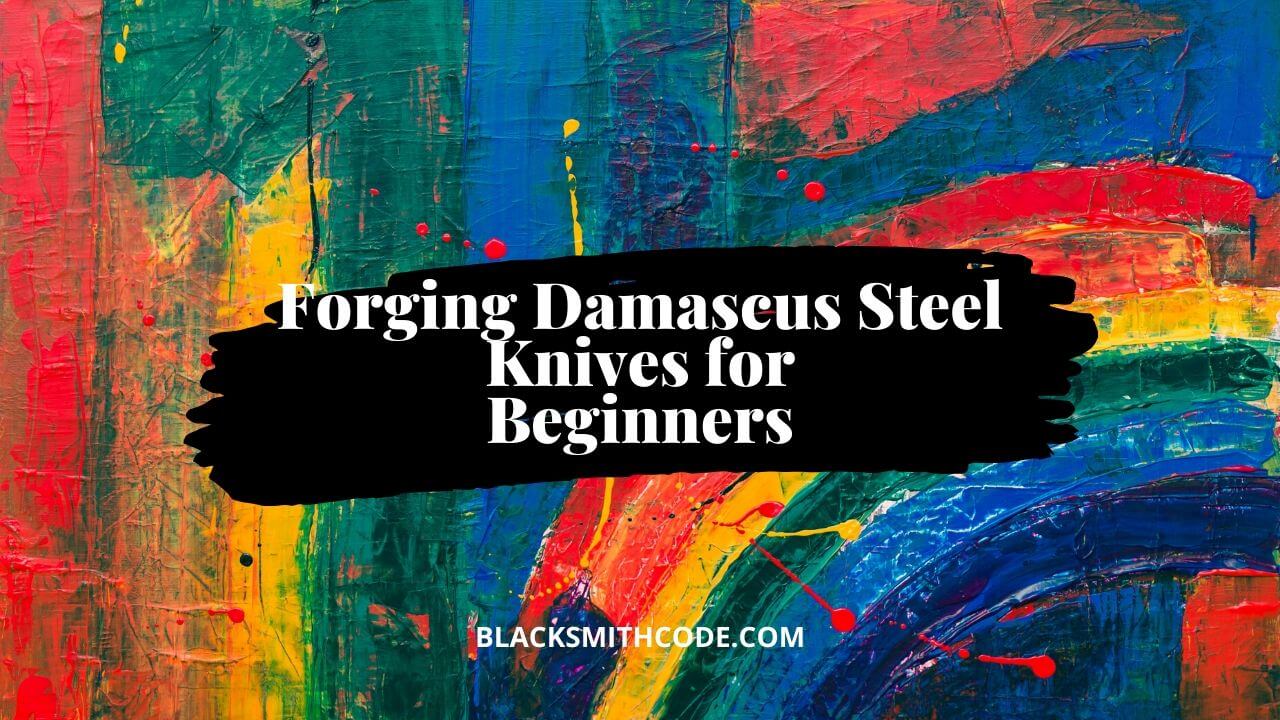Damascus steel, often referred to as the modern pattern-welded knife, stretches back to the 17th century of medieval western culture. Initially, the blade was forged using wootz steel that was imported from Persia and Sri Lanka at that time. Do you know forging damascus steel knives for beginners is a huge progress? Now you know!
What makes the Damascus knives so unique? The aesthetics!
The distinctive wavy pattern on the Damascus knife adds to its beauty. Moreover, these knives are sharp, sturdy, and resistant to shattering. The Damascus knives category includes pocketknives, folding knives, and bowie knives.
Want to forge a Damascus knife? Wish to learn forging damascus steel knives for beginners? Well, you might get addicted to it!
Although the ancient art of making Damascus steel knives has been lost for centuries, the modern technique includes forging multiple layers of steel to obtain a distinctive pattern. Let’s see how you can forge your very own Damascus knife:
Selection of material
High carbon steel, preferably 1084 or 1095, is forged with 15N20 (1075 with small amounts of nickel). 1095 steel has about 0.95% of carbon content that serves to toughen the steel and reduce wear and tear that the blade will experience over time.
15N20 adds to the toughness of the blade, and the etching resistant property results in a silver layer almost as bright as nickel. Both the high carbon steel and 15N20 combine to give a good contrast.
Some other common grades used include VG1, VG2, VG10, AUS8, and AUS10.
Assemble the billet
Cut both of the steel into desired dimensions and stack them over each other alternatively. Tack weld the layers and don’t forget to weld a temporary handle as you don’t want your hands to be burnt in the process.
If you want the finished blade to be darker, the high carbon steel layers should be twice the amount of 15N20.
The forge is heated to approximately 2300-2400 degrees Fahrenheit. The billet is kept inside the forge until it becomes dull red. Sprinkle some anhydrous borax and let it melt. Repeat the process till the whole billet is evenly heated.
Increase layers
This is where you will need your press or hammer. Hammer the billet to increase its overall surface area. Make sure you don’t hammer in only one direction.
Cut the billet into as many pieces depending on the number of layers desired. You can also bend it onto itself. After each cutting/folding, repeat the exact procedure in the first step that was to weld the layers, apply flux, and forge them.
The layer count is what determines the Damascus pattern on the blade. Random pattern, raindrop pattern, or twist pattern, all of them require a different number of layers. This step can be somewhat tricky when forging damascus steel knives for beginners.
Before the heat treating, you can give the billet the shape of a knife and normalize it by heating it above the critical temperature. Let it heat one more time above the critical temperature and quickly dip it in warm vegetable oil (quenching).
Finally, the blade is tempered and hand-sanded to reveal the beautiful Damascus pattern. Dilute Ferric Chloride can also be used to etch the blade.
Don’t forget to attach the handle!
Conclusion
You’ve done it! You’ve revived the lost art of forging a Damascus blade. If you went for a random pattern, you could increase the number of layers to obtain a twist or even a ladder-like design for the next time.
Forging a Damascus blade is fun. This pattern-welded steel knife reflects versatility that isn’t available in any other knife. Each Damascus knife is a unique piece of art; no two knives can have the same pattern.
Each Damascus knife will be a valuable addition to your collection. Forging damascus steel knives for beginners is also a valuable skill to add. Make it worth it!

